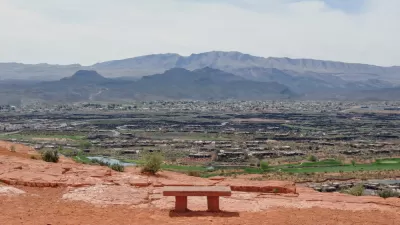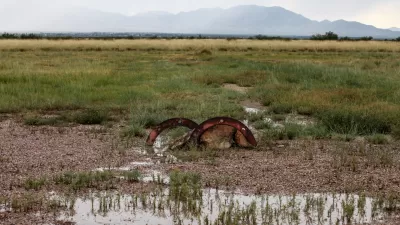Over half of the land in the American West is publicly owned. Policy over the last century has tended towards allowing the extraction of natural resources, but it may be time for a shift into preservation.
"Between 1970 and 2000, nonlabor jobs fueled 86 percent of this growth. Mining, timber, and agriculture (including ranching) contributed only 1 percent. Now, 93 percent of jobs in the West have no direct link to public lands, says Rasker. But wilderness areas, in conjunction with infrastructure like airports, correlated closely with areas that saw the greatest growth.
'The major contribution is that it creates a setting,' he says, and that's what immigrants want. Conserving rather than exploiting nature makes more economic sense, he says. People move here to live near nature.
Land-management agencies have been slow to recognize the new role of unspoiled public lands as an amenity, he says. But they're coming around. The marked 'blue shift' in the politics of Western states in the recent election suggests a more conservation-minded public."
FULL STORY: Can America’s West stay wild?

Alabama: Trump Terminates Settlements for Black Communities Harmed By Raw Sewage
Trump deemed the landmark civil rights agreement “illegal DEI and environmental justice policy.”

Study: Maui’s Plan to Convert Vacation Rentals to Long-Term Housing Could Cause Nearly $1 Billion Economic Loss
The plan would reduce visitor accommodation by 25% resulting in 1,900 jobs lost.

Planetizen Federal Action Tracker
A weekly monitor of how Trump’s orders and actions are impacting planners and planning in America.

Wind Energy on the Rise Despite Federal Policy Reversal
The Trump administration is revoking federal support for renewable energy, but demand for new projects continues unabated.

Passengers Flock to Caltrain After Electrification
The new electric trains are running faster and more reliably, leading to strong ridership growth on the Bay Area rail system.

Texas Churches Rally Behind ‘Yes in God’s Back Yard’ Legislation
Religious leaders want the state to reduce zoning regulations to streamline leasing church-owned land to housing developers.
Urban Design for Planners 1: Software Tools
This six-course series explores essential urban design concepts using open source software and equips planners with the tools they need to participate fully in the urban design process.
Planning for Universal Design
Learn the tools for implementing Universal Design in planning regulations.
Caltrans
Smith Gee Studio
Institute for Housing and Urban Development Studies (IHS)
City of Grandview
Harvard GSD Executive Education
Toledo-Lucas County Plan Commissions
Salt Lake City
NYU Wagner Graduate School of Public Service





























